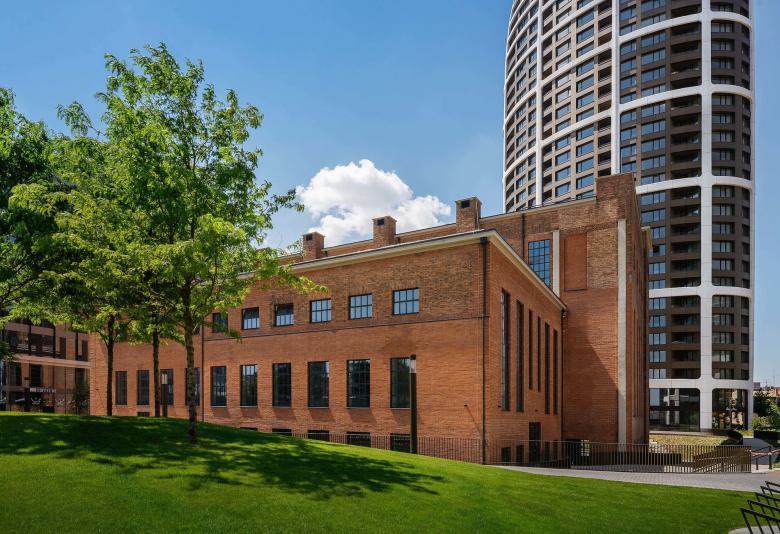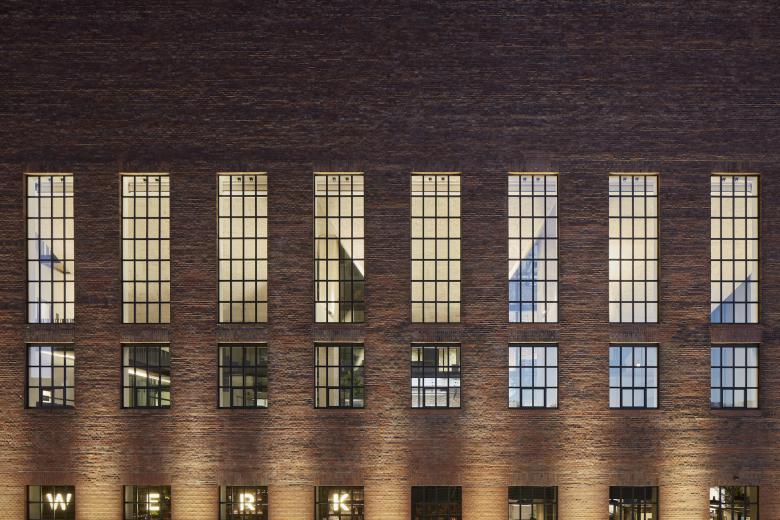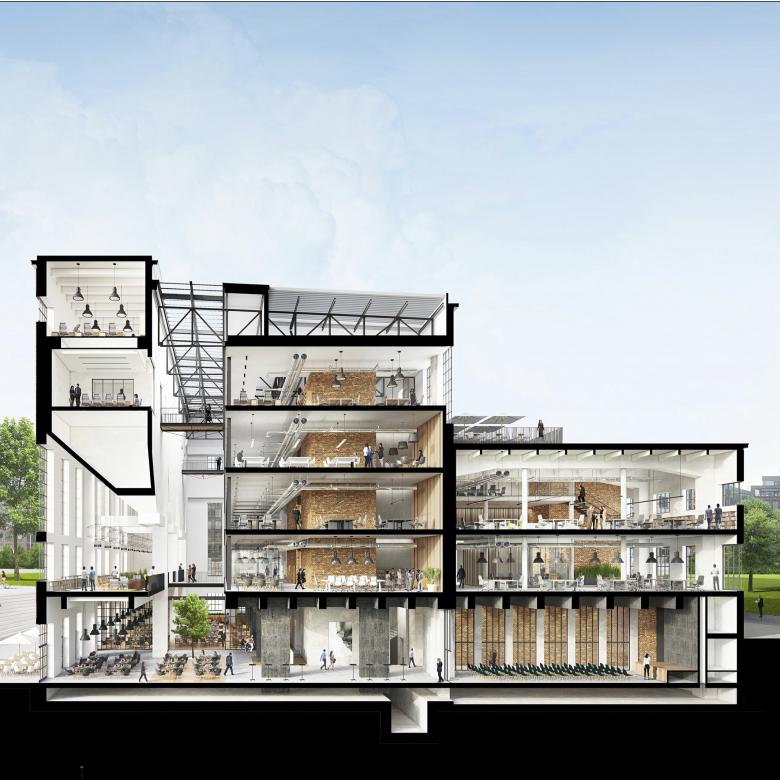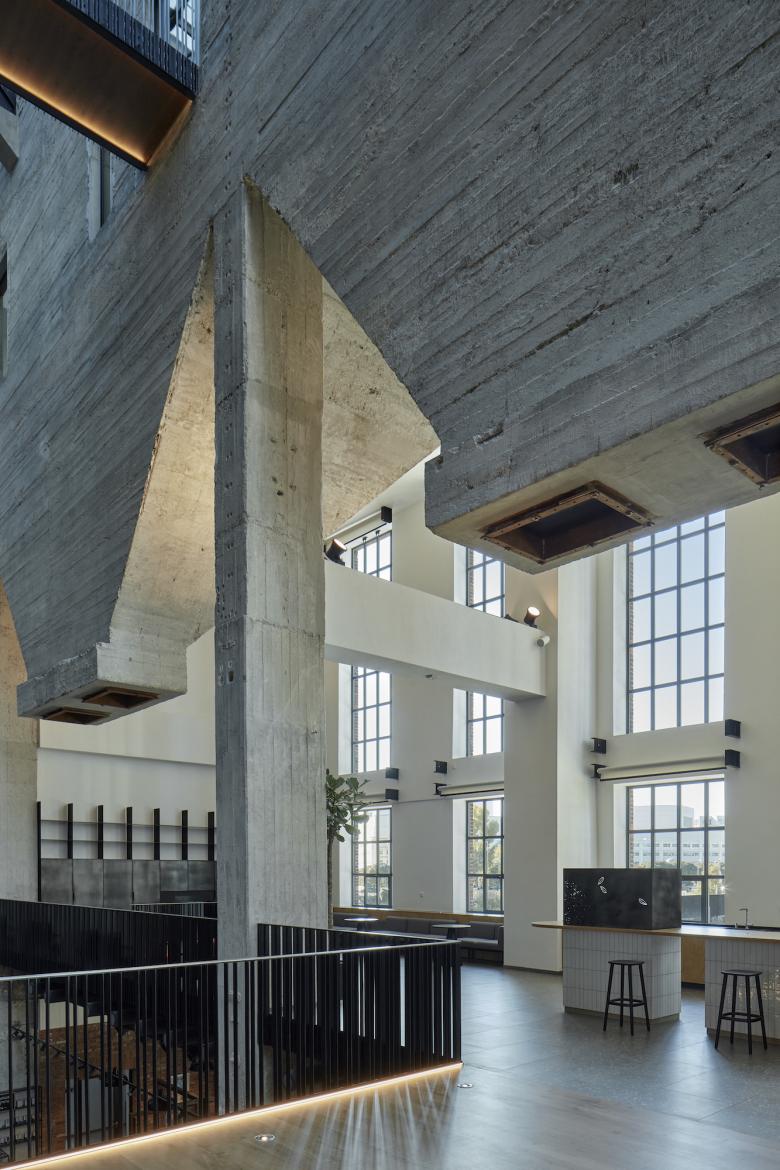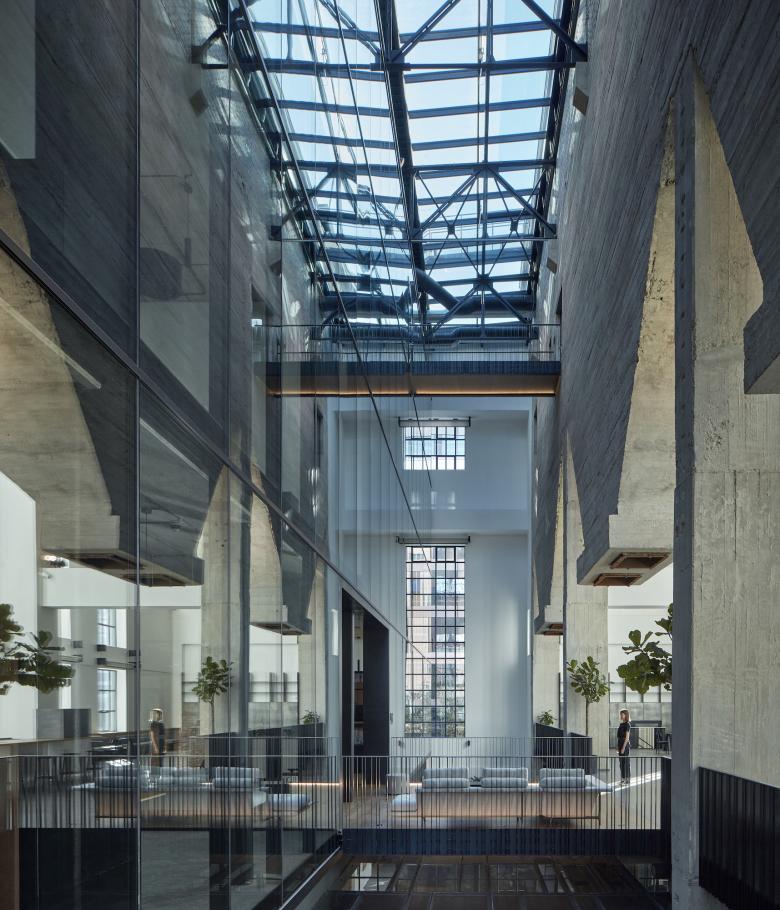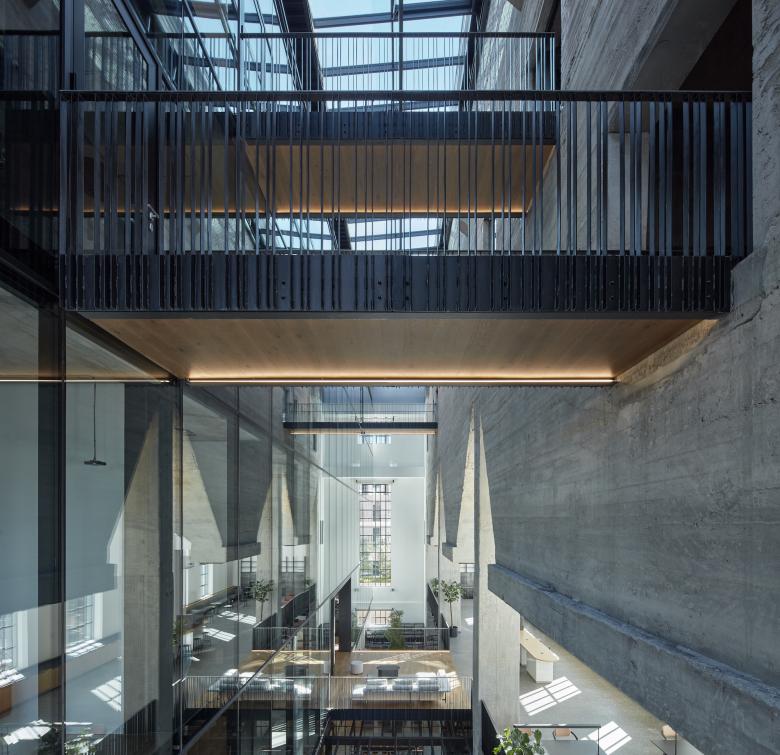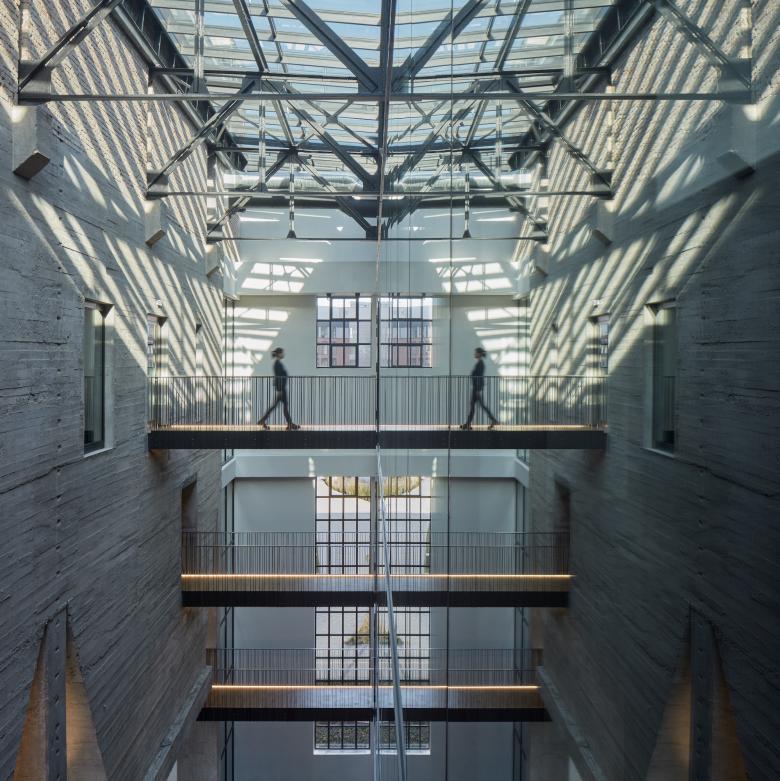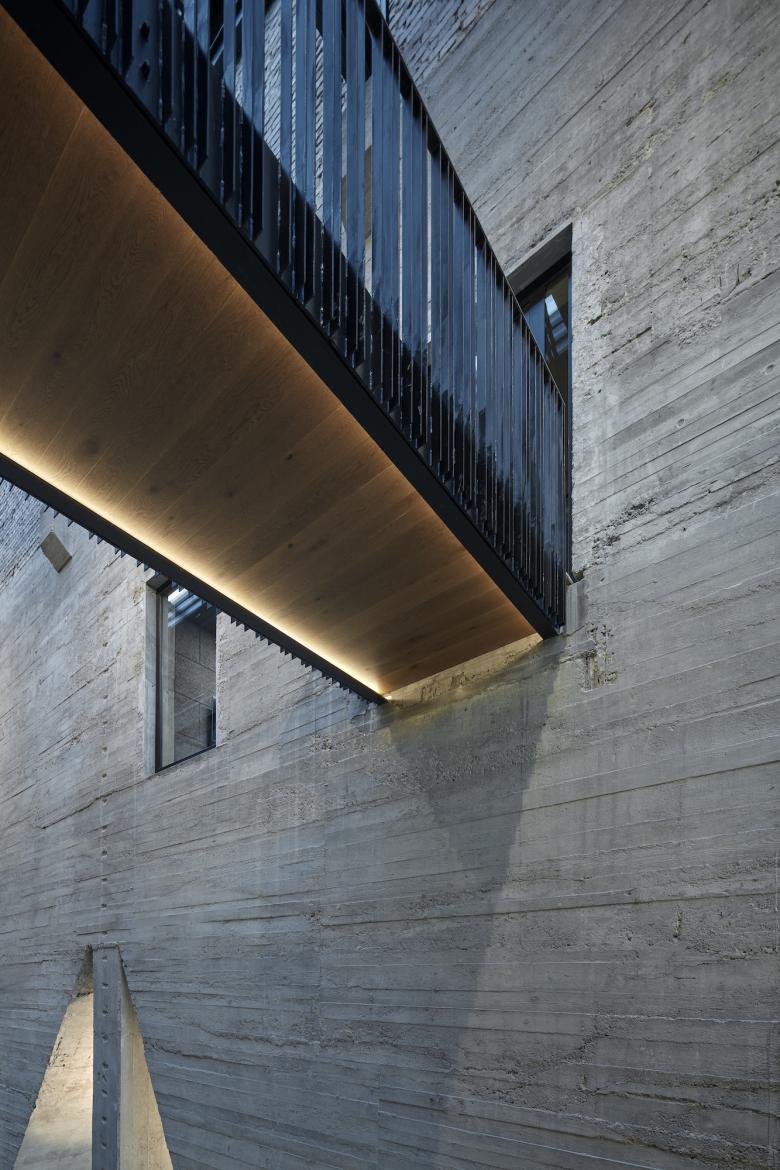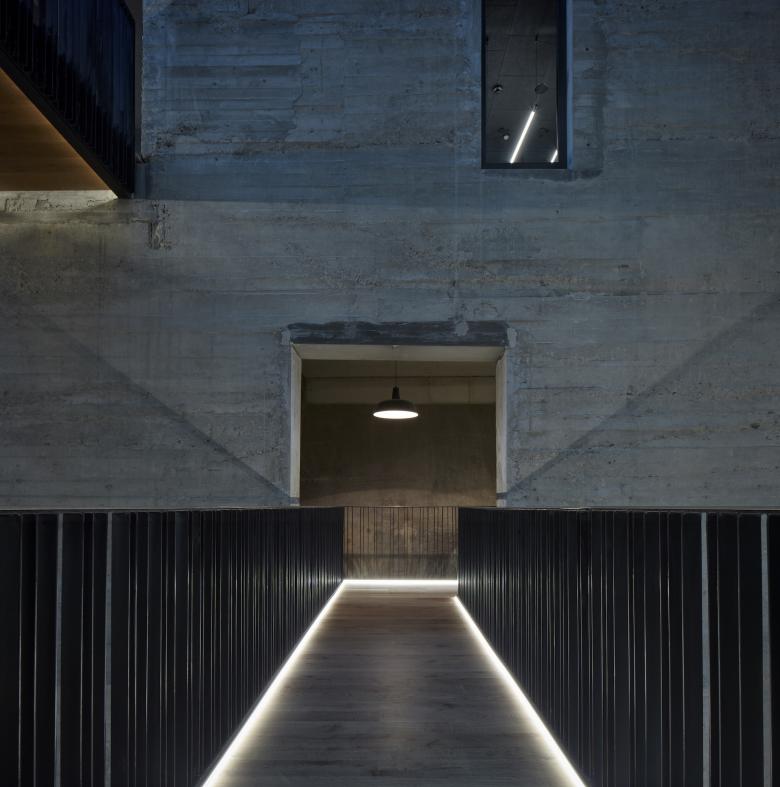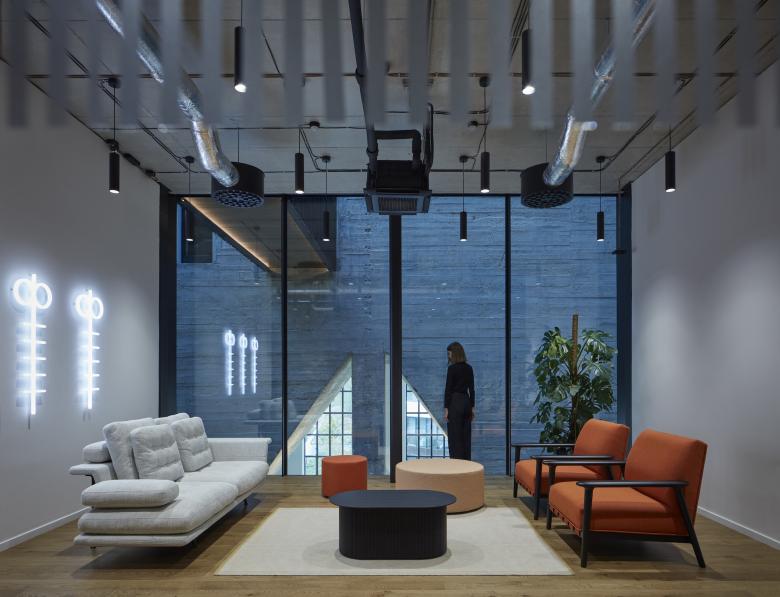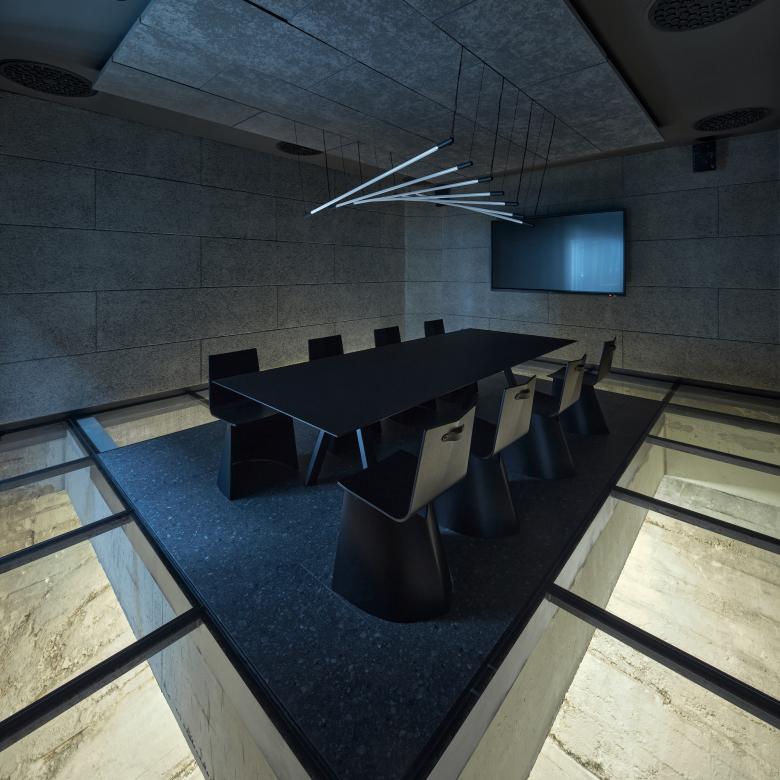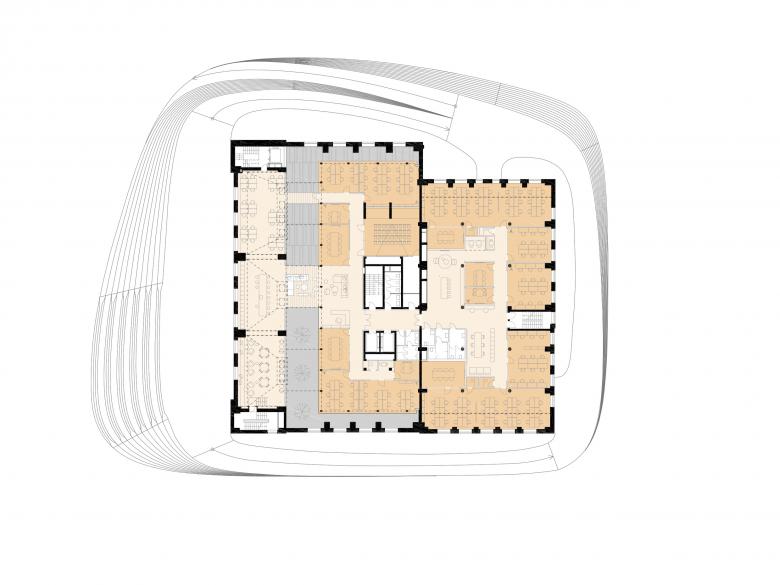Conversion of Jurkovič Heating Plant National Cultural Monument
The Jurkovič Heating Plant is one of the last evidences of the former Apollo Refinery. The original industrial area has become part of the new Bratislava center, with the renovated Jurkovič Heating Plant as its cultural epicenter and an attractive accent in the middle of the modern architecture of neighboring Sky Park buildings by Zaha Hadid Architects.
Location: Bratislava, Slovakia
Investor: Penta Real Estate
Conversion Lead Architect: Martin Pasko and DF Creative Group
Co-authors of the architectural part: Zuzana Zacharová, Eva Belláková, Matúš Podskalický, Martina Michalková, Alexandra Havranová
Renovation of facades and roof cladding: Pavol Pauliny, Vlasta Viglašová, Ján Kresan / Pamarch
Interiors of shell & core and auditorium: DF Creative Group
Base4Work rental fit-out: Ján Antal, Barbora Babocká / Studio Perspektiv
Restaurant Werk fit-out: Beef architects
Cafe Dot Gallery fit-out: Point architects
Cooperation: Roman Bányai (conversion chief engineer); Marta Pichová, Ivan Holub (renovation of facade and roof cladding); Pavol Pribylinec, Juraj Prokipčák, Mária Kubaliaková (building part)
Conversion Chief Structural Engineer: Peter Gavaľa
Land area: 1,800m2
Built area: 6,300m2
After a long period of searching for the most suitable function for the NCM, the completion of the comprehensive reconstruction, its rescue, and the new sustainable concept has become a reality. In 2017, developer Penta Real Estate invited seven renowned studios to participate in an architectural competition for the NCM's conceptual design. Architect Martin Pasko, along with his DF Creative Group team, won the prestigious competition and became the authors of the conversion of this iconic building. The original author is Dušan Jurkovič, a legend of Slovak architecture. The new design offered the most appropriate layout of functions and spaces, while highlighting the original historical value and unique industrial atmosphere of this national cultural monument.
The architectural solution uses the void interior space in the boiler room and the turbine hall for the construction of new independent structures, while creating new areas and floors consistently offset from the original building. This concept makes it possible to separate and distinguish historical constructions from new ones, while simultaneously embracing and respecting history and harmony. The result is that the reconstructed Jurkovič Heating Plant will provide unique BASE4Work industrial co-working spaces for people and companies from creative industries, architects, start-ups, and small IT companies. At the same time, the building is accessible to the general public at the ground floor level, including the living square entrance.
The successful implementation confirmed the firm's intention to create a community space for the public with a unique industrial atmosphere for social events, conferences, and exhibitions, with a quality restaurant and cafe to support that goal. Upon entering the building, the attractive entrance atrium passes through all of the floors and opens up to the new glass facade, forming an inner "square" where the WERK restaurant and lobby café are located, as well as the DOT contemporary art gallery, and a separate multifunctional hall for various cultural events.
The intervention highlights many historical construction details, including the structure's original rugged columns and three dominant hoppers. The reconstruction created an original representative space with materials in their original roughness and color. Newly added constructions and newly inserted materials (more than 31,000 bricks to the original facade and wall, and heraklith wall cladding), as well as modern technical details, are visible and present as a basic principle of truthfulness.
"Mirroring the new modern simple glass facade, based on a principle of inserting a 'building in the building', the two architectures are layered and intertwined. At least one of the three typical industrial features of the area can be seen from each part of the Heating Plant, namely typical industrial high divided windows, walls made of original bricks, or reinforced concrete structures of three hoppers," explains Martin Pasko, lead architect of the conversion.
The industrial architecture of the original structures and dominant hoppers, the newly created atrium, and the upper terrace with views of the surrounding new buildings provide visitors with an amazing, unparalleled experience, while infusing new value into the Jurkovič Heating Plant. The new design is a symbol of the former plant, a symbol of Sky Park, and a symbol of the capital, Bratislava, itself.
Video credit: DF Creative Group and Penta Real Estate
Articoli relazionati
-
-
Cocoon Pre-primary Extension at Bloomingdale International School
andblack design studio | 19.08.2024 -
-

